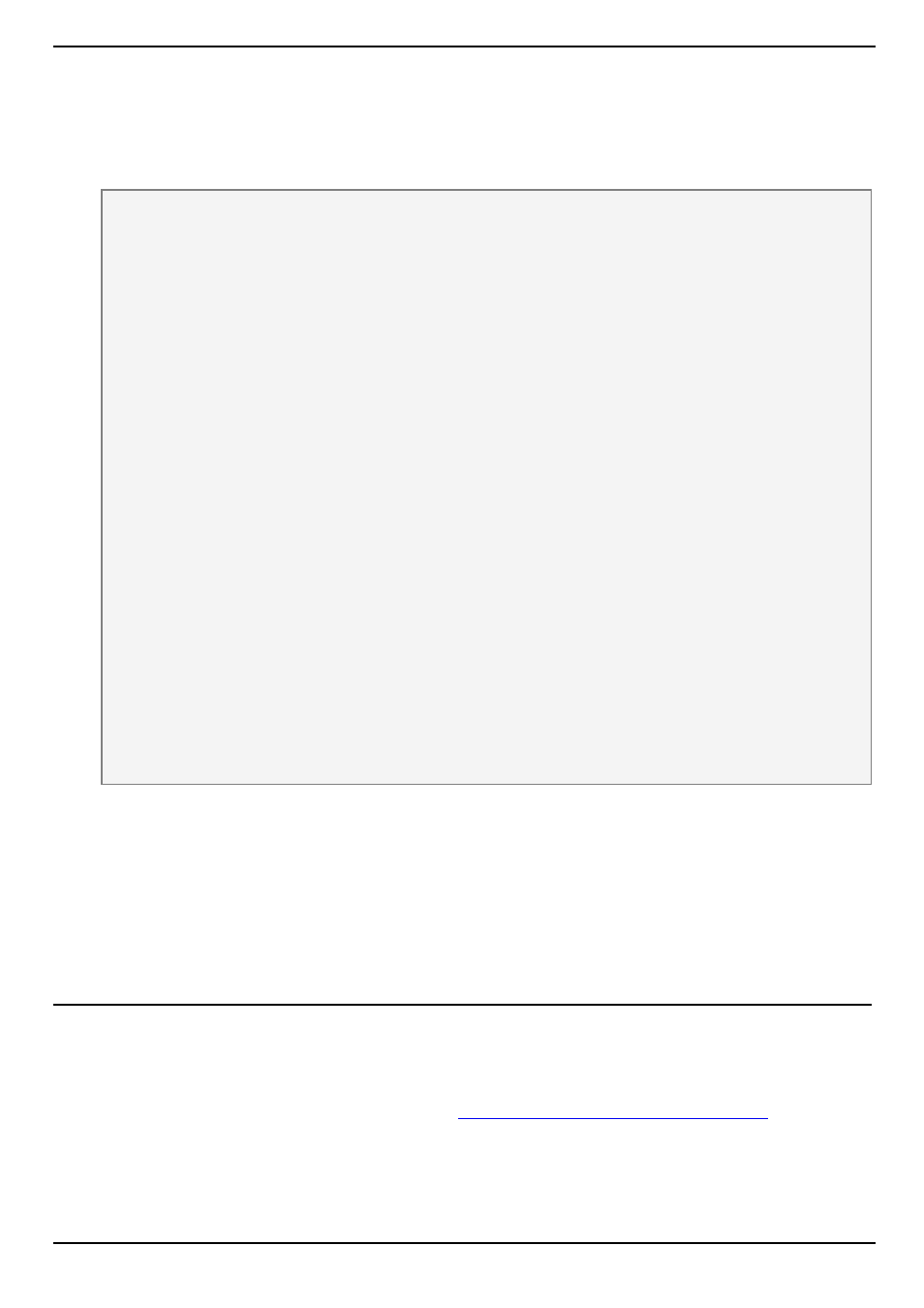Isfolderoverlapchildren(), Isfolderoverlapchildren – MiG InfoCom MiG Calendar JavaBeans User Manual
Page 37

(continued from last page)
Property: The specification for the levels that correspond to the category level. The main row, which doesn't represent a
category but actually the collection of subrows that represents the categories, is level 0. The root category is level 1 and it's
direct children level 2 and so on.
Example 1:
Level 0 (main row)
Personnel (Level 1)
Chris (Level 2)
Susan (Level 2)
Aircraft (Level 1)
SE001 (Level 2)
SE002 (Level 2)
SE002 (Level 2)
Example 2:
| Other, top header...
________________|_________________
| | | |
| P | L | Work |
| e | i | |
| r | s |=======|
| s | a | Home |
| o | | |
| n |===|=======| The date area
| n | | |
| e | M | Work |
| l | a |=======|
| | r | |
| | k | Home |
________________|_________________
When the columns is level 1, 2 and 3. The whole row is level 0.
This means that a level will get the same attributes normally. It may be background, foreground, color and such things and
is outlined in thecom.miginfocom.calendar.header.DefaultSubRowLevel
instances in the array. This also
includes mouse over and mouse pressed effects.
Parameters:
rows
- The new rows.
null
is same as empty array.
isFolderOverlapChildren
public boolean isFolderOverlapChildren()
Property: If the folder category rows, which contains other rows, should get it's secondary dimension's (along the header)
size stretched over all its sub rows bounds. Example 2 insetHeaderLevels(DefaultSubRowLevel[])
shows how this
might look. Note that this is only in the secondary dimension.
Returns:
Page 37 of 196
com.miginfocom.beans.CategoryHeaderBean
